How fast do airboats go?
Airboats are designed for shallow water rather than moving at a high speed. They can even operate with no water underneath but you can expect a top speed of up to 130 mph on the water.
However, the top speed depends on the engine power output, the type of fan used, and how well the boat is built.
Factors like the fuel efficiency, weight distribution, number of blades in the propeller, the balance between torque and horsepower also have an impact on the speed.
How Fast Do Racing Airboats Go?
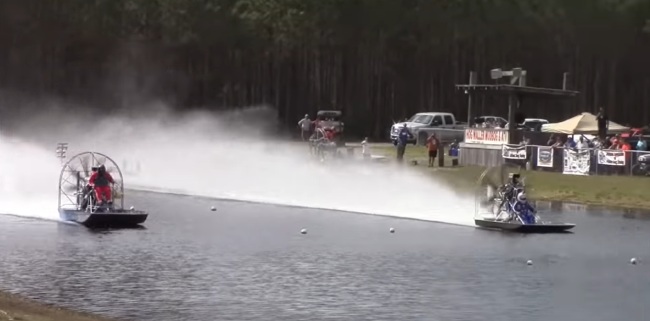
Stripped-down, lightweight airboats reach up to 135 mph on smooth and shallow water.
They only need four seconds to achieve the speed but there are risks when an airboat speeds over 60 mph.
Each airboat has a different form and shapes, so it’s difficult to pinpoint the average speed. Some have two smaller fans instead of a big one to get higher speed and better stability.
Some manufacturers now offer supercharged engines and 3-blade propellers for a massive 800 horsepower.
You can expect a top speed of around 150 mph and 135 mph on average from these fascinating boats. However, airboats that can reach over 140 mph are not common like those with 120 to 140 mph top speed.
Higher speed comes with more danger and power requirements, which makes them a rare find.
How fast do leisure airboats go?
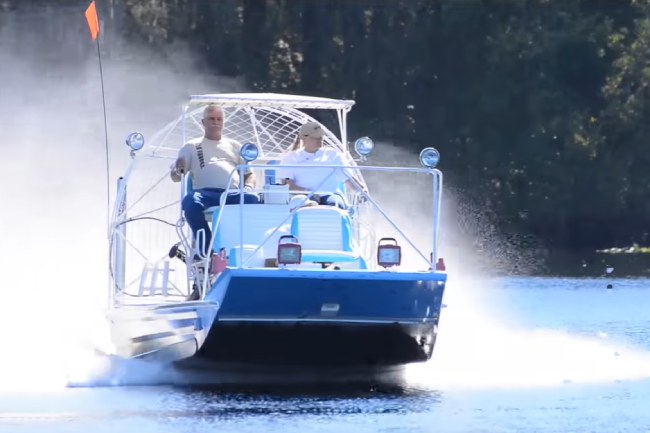
The purpose of leisure airboats is more than just speed. They glide across shallow waterways to get from point A to point B or just to let you have a fun day with friends and families.
These non-racing units still achieve 40 mph with their 200 to 350 HP engines while saving fuel.
Leisure airboats are quiet and there is no whirring sound to interrupt your conversation with people.
Some leisure airboats have enough engine power to speed up to 75 mph but they usually are used to carry loads rather than speeding up.
Why do airboats go faster in less water?
Airboats have less drag or resistance to displace when in less water. They run even faster when there is grass on the water to give more lift to the hull.
The boats use their momentum to overcome the drag so that they stay on the plane.
The less amount of drag on an inch of water means they need less power and don’t have to climb up a plane. The concept is like hydroplaning.
Why does speed feel faster on the water than on the road?
The reason is there is always some chop or turbulence in the water.
An airboat starts to send the feeling at a lower speed than a car does on a smooth road.
This is the reason you don’t feel like going fast when you drive a luxurious car at 90 mph but refuse to drive an economic car at 70.
You can push your boat at 45 mph when the water is dead smooth but you may go airborne when you try to run across some wakes.
The difference is that the wakes make the journey more thrilling and give the feeling of running faster at the same speed.
Things You Should Know About Fast Airboat Rides
You are safe going fast
Take time to make sure you’re sitting tight before the airboat speeds up.
Commercial airboats are well-maintained to remain in the best condition.
The captains are experts with decades of cruising experience. They know where’s the best spot to take you but never forget to practice safety first.
The weather is always good for an airboat ride
Airboats run 365 days a year both in clean and rainy weather.
The wintertime in South Florida is different from the winter in northern states. This means the outside is more pleasant to enjoy in an airboat.
The experience is different each time but it’s always fun.
Loud sound is a part of the experience
Airboats have special engines that you may find loud. The good thing is they allow you to cruise across different types of terrain with no issues.
Use ear protection if you prefer to avoid the noise. You will have your chance to see and hear the surroundings when the airboat slows down.
Pros and cons of airboat rides
Pros
- Airboats are fun to ride in
- They are great for inland waters
- These watercraft are fast compared to other types of watercrafts
- Airboats glide on water thanks to the flat bottom design. This allows you to have a comfortable ride in a calm condition
- They have no issues accessing shallow and narrow waterways or rivers
- The flat bottom hull with no mechanical parts allows airboats to navigate shallow bodies of water at high speed
- Useful when you want to go duck hunting or explore new places
- Doesn’t burn any shoreline
Cons
- Airboats are not ideal for the seas. No ocean uses these vessels
- The fuel consumption rate is high (Two miles per gallon on average)
- The noise may annoy you
- The addition of the fan means the maintenance of airboats is higher than most other types of vessels
- The boats may sink easily
- Unstable in bad weather conditions and choppy waters
- They are hard to load at the ramp
- The center of gravity is high for the fan apparatus, which makes the ride dangerous
- Burns the marsh
FAQs
1. How loud is an airboat ride?
Ans. Airboats produce about 100 to 110 decibels of sound when they speed across the water. The decibels reach 120+ with the revs going higher. The loud noise is more than annoying and dangerous for your ears.
2. What is the best engine for an airboat?
Ans. The 6.2L L86 Gen V AirPac is the best choice for airboats. The direct-injected engine is equipped with the MEFI 7 engine management system and makes more horsepower from burning less fuel. The machine achieves better combustion efficiency compared to conventional port-injection engines.
3. Do airboats have a transmission?
Ans. They don’t have a transmission but they can use reduction drives so you run in the vehicle equal to the second gear. The sound reduces when a reduction gear is used to lower the propeller rotation. The most efficient propeller rotation speed is about 2,500 RPM.

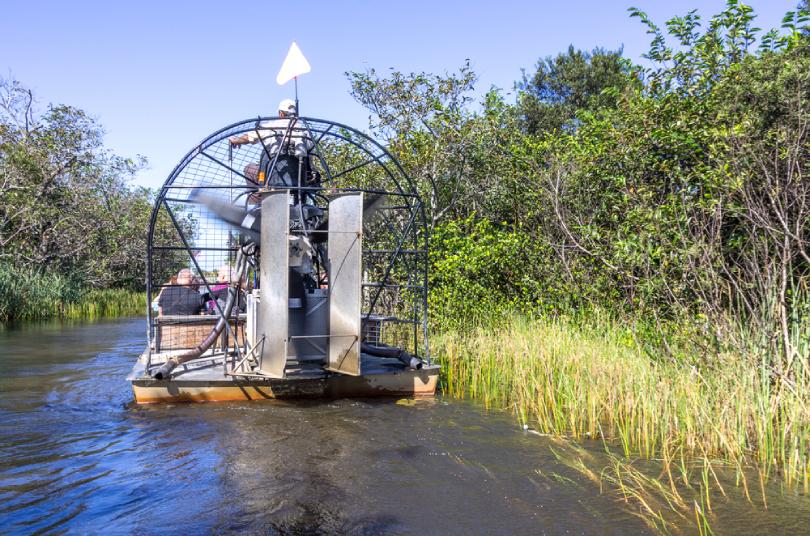
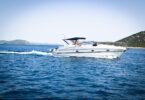




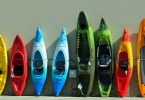
Leave a Comment